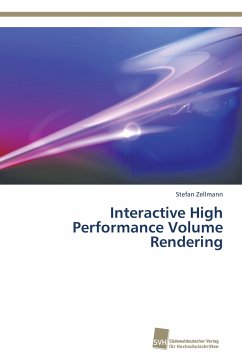Direct Volume Rendering is a 3D visualization algorithm that has a tremendous resource demand. While implementations often target GPUs because of their peak performance and memory throughput as well as their support for trilinear interpolation in hardware, the data that needs to be visualized is often only present on computing systems without dedicated graphics hardware. This is e.g. the case with simulations that were conducted on high performance computing systems. This work investigates the fitness of high performance computing architectures such as x86-based systems, GPGPU systems, and coprocessor systems for Direct Volume Rendering. The work devises a software architecture to accommodate efficient and flexible implementations for the various hardware platforms. It also outlines a novel remote rendering algorithm that decouples rendering from display to hide latency.
Bitte wählen Sie Ihr Anliegen aus.
Rechnungen
Retourenschein anfordern
Bestellstatus
Storno









